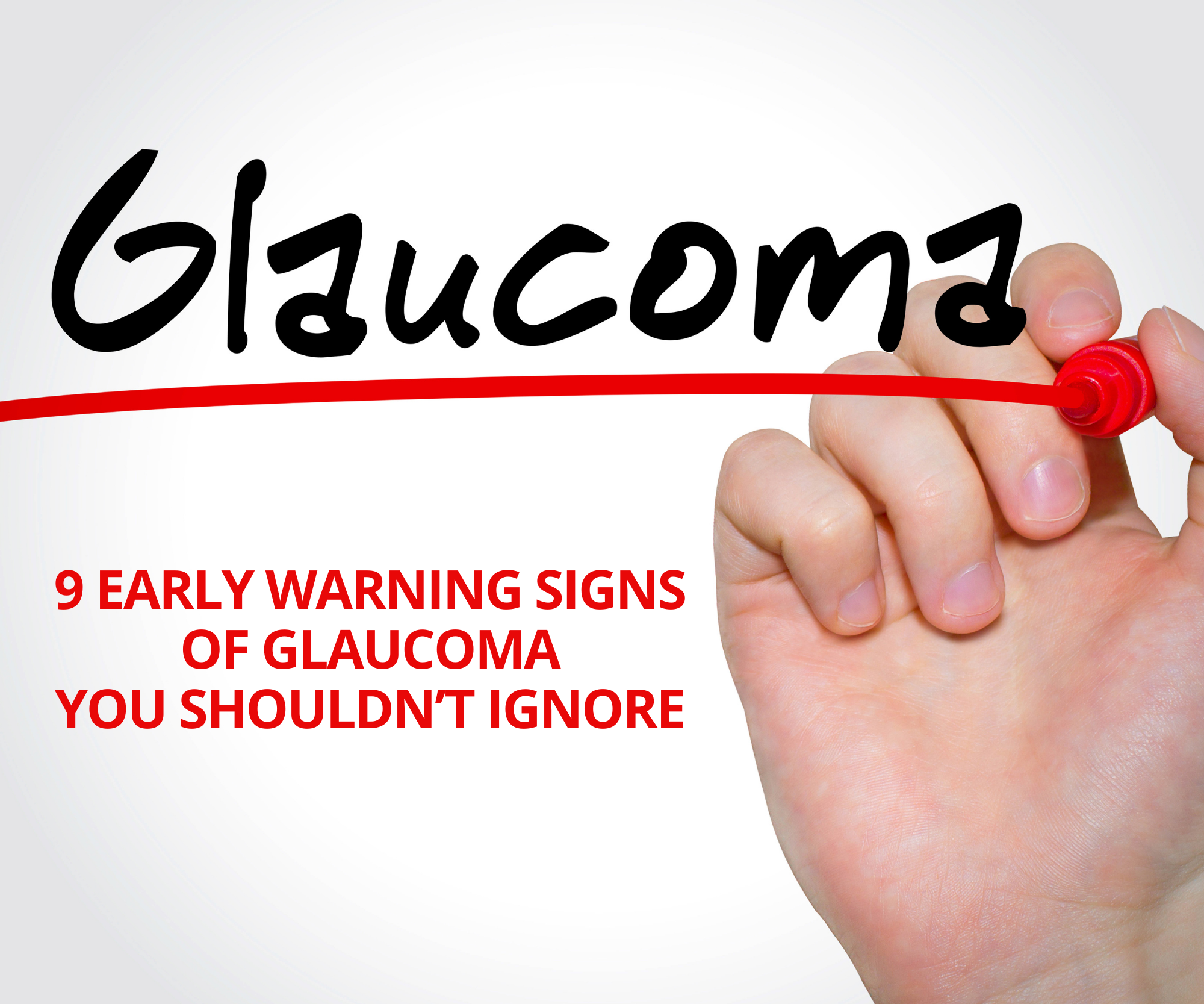
What is Glaucoma?
Glaucoma is a primary cause of permanent blindness. There are certainly several reasons you haven’t heard much about it: either you already have it or are unaware of its early symptoms. However, this does not imply you should be unaware of the warning indications. Time is on your side if you get familiar with glaucoma’s early warning signals.
Quick facts:
Did you know? Glaucoma is a condition that runs in families. Typically, you do not get it until later in life. Increased pressure within the eye, referred to as intraocular pressure, can cause damage to the optic nerve, which transmits images to the brain. Glaucoma, if left untreated, can result in permanent vision loss or perhaps total blindness within a few years.
Here are 9 Early Warning Signs of Glaucoma You Shouldn’t Ignore
While vision loss is frequently the initial indicator of glaucoma, other symptoms might arise prior to that. These include the following:
- Tunnel vision in one or both eyes
- While you lose the ability to perceive objects to your sides, even when you are facing straight ahead, this is referred to as peripheral vision loss (PVL)
- Severe eye and/or head pain
- Glaucoma-related headaches are most frequently felt around the eyes and forehead. Angle-closure glaucoma is the most common type of glaucoma that produces headaches and eye pain. Angle-closure glaucoma, sometimes called acute angle-closure glaucoma, is caused by the closing of the iridocorneal angle.
- Nausea and vomiting
- Acute glaucoma symptoms include ocular discomfort, impaired vision, and epiphora. Headache, nausea, and abdominal discomfort are all associated systemic symptoms.
- Sudden onset of visual disturbances
- The most often reported symptoms by patients with early or moderate glaucoma were a desire for more light, blurred vision, and experiencing glare.
- Excess tearing
- Many glaucoma sufferers also suffer from dry eyes. Frequently, people suffer dry eye symptoms but are unaware that they have the illness. This is especially true for persons with glaucoma and dry eye, who frequently experience severe tearing.
- Redness in the eye(s)
- Occasionally, fluid accumulates in the front portion of the eye, placing pressure on the eye and potentially damaging the optic nerve.
- Halos around lights (seeing colored rings around lights at night)
- Some patients will be unable to stare at the light in order to notice the halo, which is another symptom that their glaucoma has progressed beyond the halo stage. The easiest technique to check for this glaucoma indicator is to just stare at a light.
- Blurry vision and/or eye discomfort when exposed to light
- Vision difficulties, including decreased contrast sensitivity, glare sensitivity, and light sensitivity. Miotics, a type of glaucoma drugs that constrict the pupil in order to enhance fluid flow, can also cause glare difficulties.
- Frequent changes in eyeglass prescription
- A quick change in prescription is not normal in the majority of cases. However, if you neglect your annual eye exam, you may feel as if you are experiencing a rapid change. Occasionally, abrupt changes are caused by an eye issue. Many eye illnesses can be difficult to diagnose without a full eye exam.
To wrap things up:
Glaucoma is one of the major causes of blindness, thus detecting it early will help prevent more catastrophic complications. If you’re concerned that you may be having symptoms, call our office immediately to schedule an appointment with our doctor. There is treatment available, but it is only effective if the disease is detected early. Unlike many other diseases, glaucoma cannot be effectively treated once it has progressed to an advanced stage, making early detection critical for people at risk of developing this potentially debilitating condition. Please make an appointment with Horizon Family Eye Care today!

